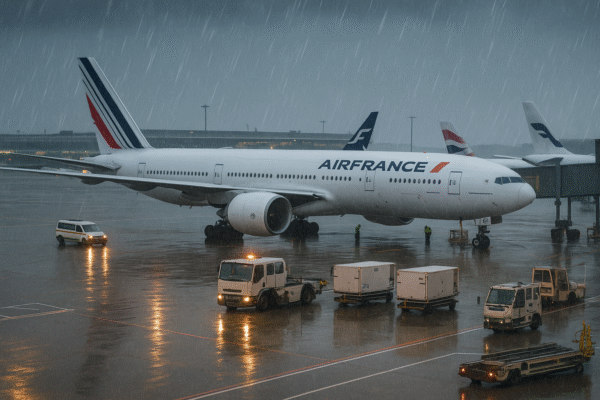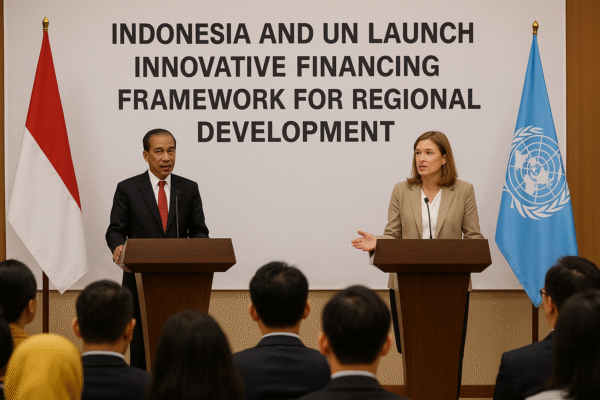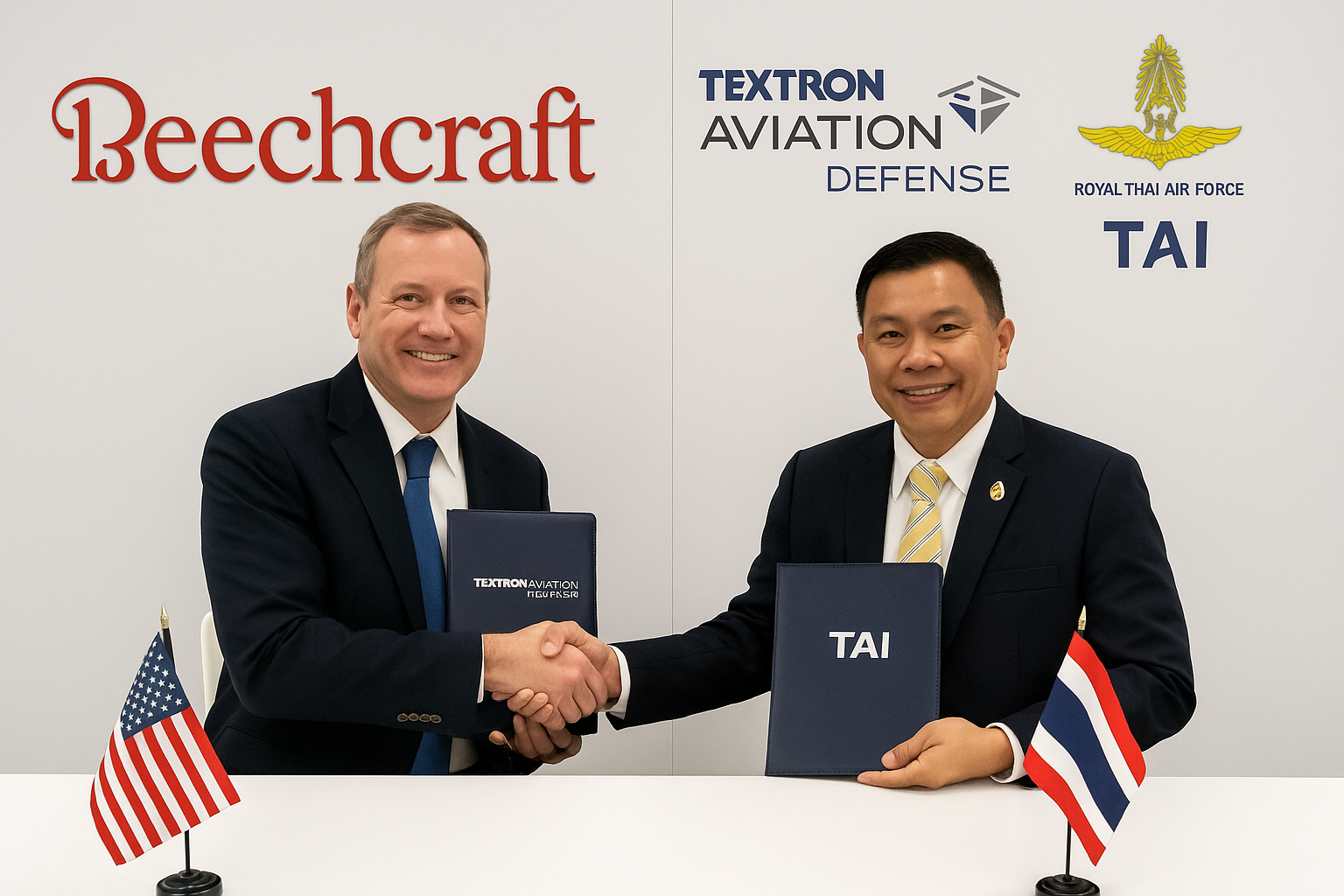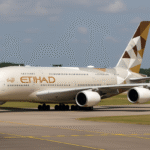In a major announcement from the 2025 Paris Air Show, Thailand has unveiled a long-term strategic sustainment program in collaboration with Textron Aviation Defense and Thai Aviation Industries (TAI) to bolster the reliability and operational readiness of the Royal Thai Air Force’s (RTAF) fleet.
The agreement, signed at Le Bourget Airport near Paris, will see Textron—an industry leader based in Wichita, Kansas—join forces with Bangkok-headquartered Thai Aviation Industries to support two of the RTAF’s most critical aircraft: the Beechcraft T-6TH trainer and the AT-6TH light attack aircraft. This initiative marks a vital advancement in Thailand’s defence self-sufficiency and operational resilience.
Elevating Thailand’s Military Aviation Standards
This long-term memorandum of agreement introduces a comprehensive sustainment strategy aimed at enhancing both combat readiness and training capabilities of the Royal Thai Air Force. The programme is a cornerstone of Thailand’s national strategy to reduce dependence on foreign defence support and promote domestic aerospace capacity.
The collaboration encompasses scheduled maintenance, parts inventory control, unscheduled repair, avionics upgrades, and training for maintenance personnel. The integrated support model will combine Textron’s OEM-level engineering, technology, and global logistics expertise with TAI’s proven in-country servicing capacity.
This structure ensures aircraft availability remains high while simultaneously transferring critical know-how to Thailand’s aviation workforce—a dual-track approach that ensures both immediate readiness and long-term sustainability.
Key Aircraft: T-6TH and AT-6TH
At the center of the programme are two aircraft types playing key roles in Thailand’s defence landscape:
- The T-6TH is an advanced variant of the renowned Beechcraft T-6 Texan II, used globally for pilot training. It is instrumental in equipping RTAF pilots with the foundational flight skills necessary to transition into multirole combat aircraft.
- The AT-6TH, adapted from the AT-6 Wolverine, is a robust, light attack platform capable of close air support, surveillance, and counter-insurgency operations. With integrated weapon systems and rugged performance, it provides a cost-efficient combat solution for Southeast Asia’s varied security environment.
By securing sustained support for these aircraft, Thailand ensures its defence force remains ready across both training pipelines and combat missions.
Building Local Capability Through Strategic Partnership
Textron’s role includes ongoing engineering support, access to proprietary technical data, and assistance in upgrading Thailand’s aircraft lifecycle infrastructure. TAI, in turn, will handle daily sustainment activities at home bases and regional centres across Thailand, aligning with the Ministry of Defence’s localization drive.
This arrangement accelerates the development of a domestic Maintenance, Repair, and Overhaul (MRO) ecosystem that meets global standards. TAI, with its deep operational integration with the RTAF and extensive experience with both Western and regional platforms, is ideally positioned to lead sustainment from within the country.
By empowering Thai engineers and technicians through training and operational responsibility, the agreement significantly strengthens Thailand’s sovereign capability in aviation logistics.
Defence Policy Synergy and Industrial Modernization
The agreement is aligned with Thailand’s broader Defense Industry Development Master Plan, which prioritizes the transfer of technology and enhancement of national defence industries. The Thai government has emphasized the importance of creating self-reliant systems that reduce long-term defence costs and enhance national security.
Textron Aviation Defense, in a statement issued at the signing ceremony, noted:
“This is not just a maintenance programme—it’s an enduring partnership that ensures the Royal Thai Air Force has the tools, expertise, and resources needed to maintain fleet performance at the highest standard.”
Likewise, Thai Aviation Industries CEO emphasized that this partnership signifies a new chapter in national defence support, stating:
“By working closely with Textron, we are building the capability to support critical air assets independently—an investment in both national resilience and regional leadership.”
Paris Air Show 2025: A Global Stage for Defence Innovation
The agreement was one of the highlights for Southeast Asia at the 2025 Paris Air Show, the world’s premier aerospace exhibition. It sends a strong signal that Thailand is committed to not only acquiring cutting-edge platforms but also sustaining them through domestic capability and trusted partnerships.
The move reflects a regional trend as Southeast Asian nations prioritize high-readiness, cost-efficient, and locally supported military aviation ecosystems. With increasing regional defence budgets and the need for rapid-response air forces, Thailand’s initiative sets a valuable precedent.
A Sustainable Defense Future
The long-term benefits of this collaboration are clear:
- Improved fleet readiness through local maintenance
- Reduced lifecycle costs for the Royal Thai Air Force
- Empowerment of local aviation talent
- Enhanced sovereignty over critical defense systems
- A model that can be replicated across other nations in ASEAN
Moreover, the initiative provides a blueprint for future Thai defense procurements, where partnerships are evaluated not only on acquisition cost but also on long-term supportability and local industrial participation.
Conclusion
Thailand’s signing of a comprehensive aircraft sustainment agreement with Textron Aviation Defense and Thai Aviation Industries at the 2025 Paris Air Show marks a strategic leap in the country’s military aviation evolution. This milestone paves the way for a more self-sufficient, agile, and technologically adept Royal Thai Air Force, ready to meet both training and operational challenges head-on.
As defense forces globally shift toward integrated, localized, and lifecycle-focused support models, Thailand’s move offers a compelling case study in balancing global expertise with domestic execution—a win for national security, aerospace modernization, and regional defense collaboration.
For more travel news like this, keep reading Global Travel Wire















